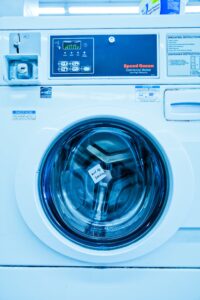Ice dispensers are a common feature in many homes and businesses, providing a convenient way to access ice for drinks and other purposes. However, like any appliance, ice dispensers can experience dysfunction and require maintenance or repair. Common issues that can arise with ice dispensers include slow or no ice production, ice clumping or freezing together, and leaks or water damage. A variety of factors can cause these problems, including clogged filters, faulty valves or motors, and improper maintenance. Ignoring these issues can lead to further complications, resulting in increased repair costs and downtime. Regular maintenance is essential to prevent these problems and ensure optimal performance, as neglecting filters and components can significantly impact on appliance performance. Additionally, understanding the signs of malfunction can empower users to address issues promptly before they escalate.
Important points
- Various issues can cause ice dispenser dysfunction, such as clogged filters, faulty valves, and low water pressure.
- Regular maintenance is crucial to prevent ice dispenser problems and ensure optimal performance.
- Signs of ice dispenser problems include slow ice production, unusual noises, and leaking water.
- Troubleshooting ice dispenser issues involves checking the water supply, inspecting the dispenser components, and testing the dispenser’s electrical connections.
- DIY repairs may be possible for some ice dispenser problems, but a professional repair may be necessary for more complex issues.
The Importance of Regular Maintenance for Ice Dispensers
Regular maintenance is crucial for ice dispensers to ensure optimal performance and prevent issues from arising. By regularly cleaning and maintaining your ice dispenser, you can extend its lifespan and avoid costly repairs. Regular maintenance also helps to ensure that the ice produced is clean and safe for consumption. Benefits of regular maintenance include improved ice quality, increased energy efficiency, and reduced risk of breakdowns. It is recommended to follow a maintenance schedule that includes tasks such as cleaning the dispenser, replacing filters, and checking for any signs of wear or damage.
How to Identify Ice Dispenser Problems: Signs and Symptoms
There are several signs that your ice dispenser may be malfunctioning. These include slow or no ice production, unusual noises coming from the dispenser, ice clumping or freezing together, and leaks or water damage around the dispenser. Other symptoms of ice dispenser issues can include foul odors or tastes in the ice, inconsistent ice cube size, and excessive frost buildup in the freezer compartment. If you notice any of these signs or symptoms, it is important to troubleshoot and diagnose the problem as soon as possible to prevent further damage.
Troubleshooting Ice Dispenser Issues: Step-by-Step Guide
When troubleshooting ice dispenser problems, it is important to follow a step-by-step guide to identify the root cause of the issue. Start by checking the power supply and ensuring that the dispenser is properly plugged in. Next, inspect the water supply line for any kinks or blockages. If the water supply is functioning properly, check the ice maker itself for any visible signs of damage or malfunction. If you are unable to identify the problem on your own, it may be necessary to consult the user manual or contact a professional for assistance. Once the problem has been identified, you can then proceed with fixing the issue.
Fixing Common Ice Dispenser Problems: DIY vs. Professional Repair
When it comes to fixing common ice dispenser problems, you have the option of either attempting a DIY repair or calling in a professional. There are pros and cons to both approaches. DIY repairs can save you money and give you a sense of accomplishment, but they also carry the risk of causing further damage if not done correctly. Professional repairs, on the other hand, ensure that the problem is fixed correctly and can provide peace of mind. It is important to consider factors such as your level of expertise, the complexity of the repair, and the cost of professional services when deciding which approach to take.
Understanding the Role of Filters in Ice Dispenser Functionality

Filters play a crucial role in ice dispenser functionality by removing impurities from the water before it is turned into ice. This helps to ensure that the ice produced is clean and safe for consumption. There are different types of filters used in ice dispensers, including carbon filters and sediment filters. Carbon filters remove chlorine and other chemicals from the water, while sediment filters remove particles such as dirt and rust. It is important to regularly replace and maintain these filters to ensure optimal performance and prevent issues such as foul odors or tastes in the ice.
How to Clean and Maintain Ice Dispenser Components for Optimal Performance
Cleaning and maintaining ice dispenser components is essential for optimal performance and to prevent issues such as clogs or leaks. To clean the dispenser, start by unplugging it and removing any ice or water from the storage bin. Use a mild detergent and warm water to clean the interior and exterior of the dispenser, paying special attention to areas such as the ice chute and dispenser nozzle. It is also important to regularly clean and sanitize the ice storage bin to prevent the growth of bacteria or mold. In addition to cleaning, it is important to regularly inspect and maintain components such as the water supply line, valves, and motors to ensure they are functioning properly.
Upgrading Your Ice Dispenser: Tips for Choosing the Right Model
If you are considering upgrading your ice dispenser, there are several factors to consider when choosing the right model. These include the capacity of the dispenser, the type of ice it produces (such as cubed or crushed), and any additional features or functionalities that may be important to you. It is also important to consider factors such as energy efficiency, noise level, and ease of maintenance when choosing a new ice dispenser. Additionally, it can be helpful to read reviews and compare different models to ensure you are making an informed decision.
Preventing Future Ice Dispenser Dysfunction: Best Practices and Tips
To prevent future ice dispenser issues, there are several best practices and tips to follow. These include regularly cleaning and maintaining the dispenser, following a recommended maintenance schedule, and using high-quality filters. It is also important to avoid overloading the dispenser with ice or placing items on top of it that could obstruct airflow. Additionally, it is recommended to periodically check for any signs of wear or damage and address them promptly to prevent further issues.
Ensuring Reliable Ice Dispenser Functionality for Your Home or Business
In conclusion, maintaining reliable ice dispenser functionality is crucial for both homes and businesses. By understanding common issues and causes of dysfunction, regularly maintaining and cleaning the dispenser, and troubleshooting and fixing problems as they arise, you can ensure that your ice dispenser continues to provide clean and safe ice for your needs. Whether you choose to attempt DIY repairs or call in a professional, it is important to prioritize the maintenance and care of your ice dispenser to extend its lifespan and prevent costly repairs. By following best practices and tips, you can enjoy reliable ice dispenser functionality for years to come.
If you’re experiencing issues with your ice dispenser, troubleshooting and fixing them can be a daunting task. However, there’s no need to worry! Our team at 911 Appliance has got you covered. In our related article, “Ice Dispenser Dysfunction: Troubleshooting and Fixing Issues,” we provide expert tips and advice on how to identify and resolve common problems with your ice dispenser. From clogged lines to faulty motors, we address it all. Don’t let a malfunctioning ice dispenser ruin your day – check out our article for practical solutions.
What are the common issues with ice dispensers and how can they be fixed?
Common troubleshooting ice dispenser issues include a clogged water line, faulty water inlet valve, or a broken dispenser motor. To fix these issues, try running hot water through the line, checking the valve for blockages, or replacing the motor if it is malfunctioning. Regular maintenance can prevent these problems.
FAQs
What is an ice dispenser?
An ice dispenser is a device that dispenses ice cubes or crushed ice from a refrigerator or freezer.
What are the common issues with ice dispensers?
Common issues with ice dispensers include failure to dispense ice, slow ice dispensing, dispensing too much or too little ice, and dispensing crushed ice instead of ice cubes.
What are the possible causes of ice dispenser dysfunction?
Possible causes of ice dispenser dysfunction include a clogged or frozen dispenser chute, a faulty dispenser motor, a malfunctioning dispenser switch, a defective dispenser solenoid, or a damaged dispenser door.
How can I troubleshoot an ice dispenser issue?
To troubleshoot an ice dispenser issue, you can check the dispenser chute for clogs or ice buildup, inspect the dispenser motor and switch for proper operation, test the dispenser solenoid for continuity, and examine the dispenser door for damage or misalignment.
How can I fix an ice dispenser issue?
To fix an ice dispenser issue, you may need to clean or thaw the dispenser chute, replace the dispenser motor or switch, repair or replace the dispenser solenoid, or adjust or replace the dispenser door.
Do I need to hire a professional to fix my ice dispenser?
It depends on the severity of the issue and your level of expertise. Some ice dispenser issues can be easily fixed by homeowners with basic tools and knowledge, while others may require the assistance of a professional appliance repair technician.



